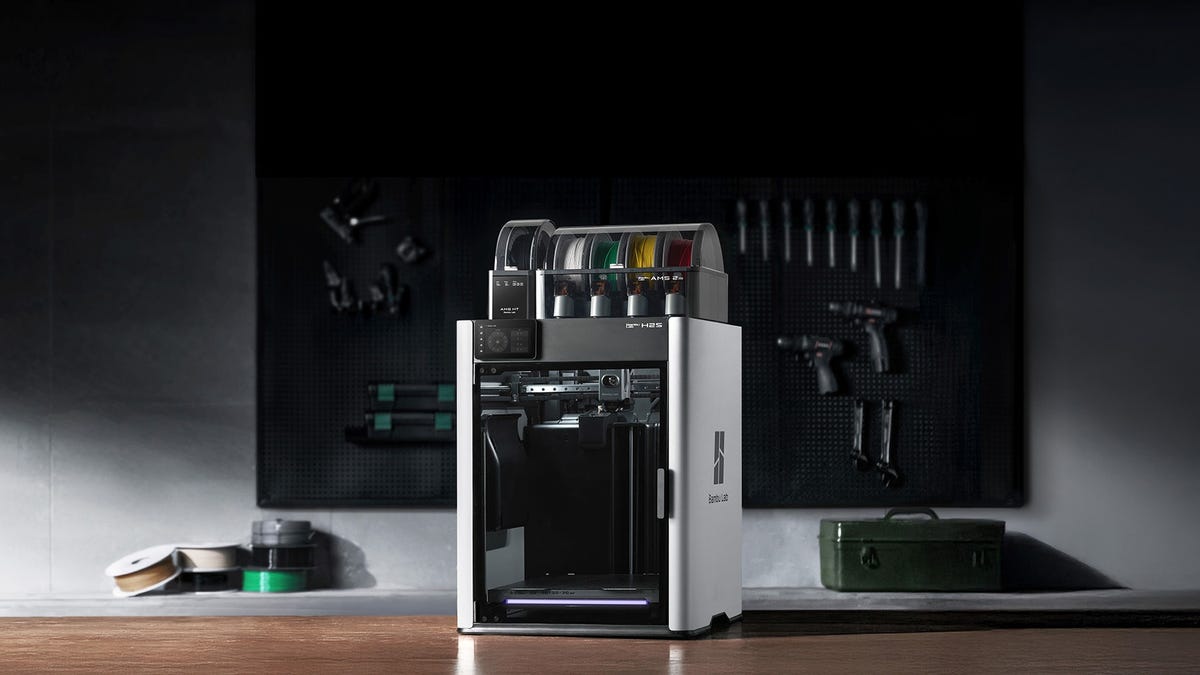Bambu Lab recently released the large-format H2D 3D printer. While I gave it a positive review, I did have some issues with the size. While the build area is technically a 350x320x325 millimeter space, you have to jump through several hoops to use it. That’s because its dual-nozzle setup stops either nozzle from reaching the edges of the plate.
Bambu Lab’s latest 3D printer, the H2S, addresses this shortfall by replacing the dual extruder with a single extruder that can reach all parts of the bed. It offers a full plate area of 340x340x320 mm, the company’s largest build area to date, and a whopping 220% increase from the X1 Carbon. The H2S is available for preorder today for $1,250 for the base model and $1,500 with the AMS combo.
The H2S and the H2D have the exact same specifications in every other respect, bar the build area, so both can be converted to use the laser and cutting attachments offered by Bambu Lab. A full laser version starts at $2,099, including the fancy green glass and cutting surfaces, but you won’t need it if you’re just looking for a big version of the Bambu Lab printers you’re used to.
The AMS 2 also works perfectly with the H2S, with the ability to string six separate AMSs, offering you a maximum of 24 colors from one machine. Each AMS 2 is also compatible with the P1P, P1S, X1C and H2D, so if you have multiple printers, you can use the AMS 2 and AMS 1 interchangeably.
Russell Holly and I have been testing the H2S and comparing it to the H2D. “In many ways, the H2S feels like an evolution of everything Bambu Lab has released in the last couple of years,” said Holly. It’s clear that Bambu Lab has listened to feedback and tried to make something for everybody. “Even the AMS Pro 2, while no longer new, is the clear result of loads of feedback from the user.”
The Bambu Lab H2S rounds out the company’s current selection of 3D printers nicely. It’s fast — nearly a third faster than the X1C — and the price is a significant drop from the H2D. More than that, it shows that the company is listening to its user base on what they want from the hardware.
Read the full article here


